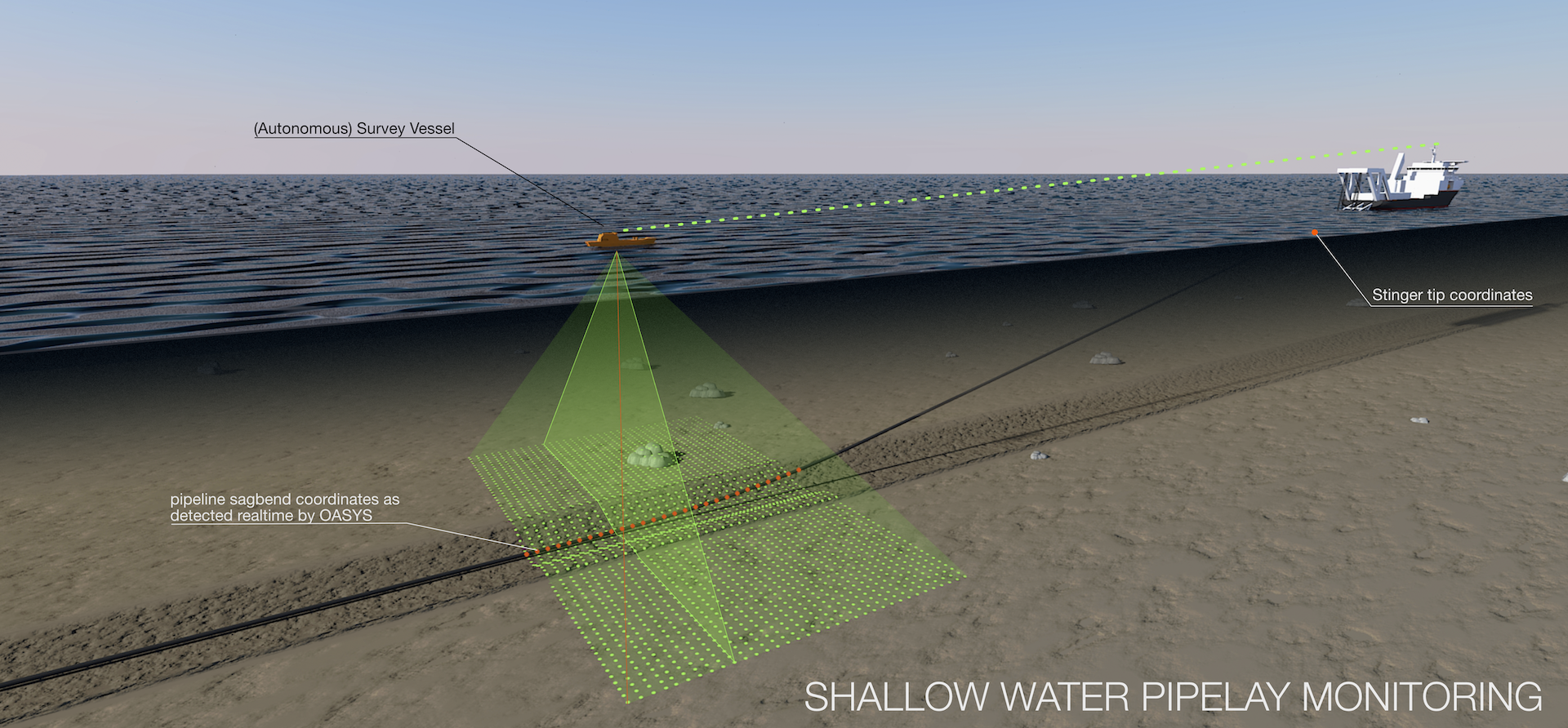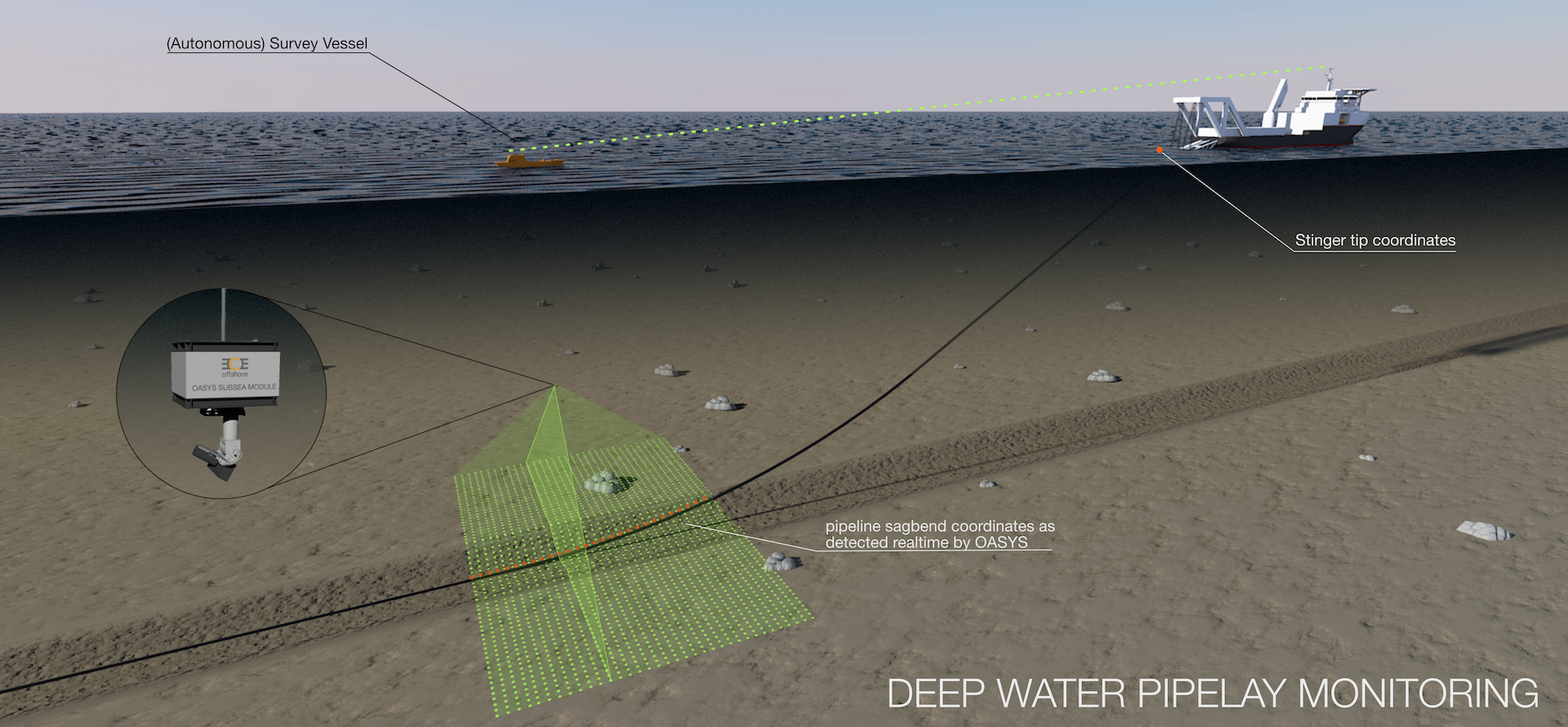Automatic pipelay touchdown monitoring
The best of both worlds: combine OASYS’ automatic object detection capabilities with the cost-effeciency of an autonomous survey vessel.
Positioning OASYS above the pipeline’s touchdown point allows it to continuously monitor the sagbend section of the pipeline. Sagbend coordinates as detected automatically by OASYS are combined with the PLV’s stinger tip coordinates in order to create a mathematical model of the pipeline.
In water depths up to 100m, OASYS can be installed directly on an autonomous survey vessel. In deeper water, OASYS is lowered from the survey vessel to 50m above seabed level.
Download
shallow water
PIPELAY MONITORING
Use OASYS’ long range scanning capabilities to scan a 3D area from a trailing (autonomous) survey vessel.
Obtained sagbend coordinates are automatically combined with the stinger coordinates to determine the submerged geometry of the pipeline.
Use detected geometry and line pipe specifications to indicate tension levels
Key benefits
- Can be controlled directly from the pipelay vessel
- Fully automatic pipeline detection: touchdown point, sagbend geometry and tension levels
- 1 operator per 12h shift to control OASYS
- Significantly reduces ROV dependency
deep water
PIPELAY MONITORING
In deep water, OASYS is mounted on a subsea control module and lowered to 75m above seabed level. The sensor uses USBL to transmit it’s position directly to the survey vessel.
When compared to ROVs, OASYS’ small size makes it less sensitive to environmental loads.
Vertical motions are limited as the system is suspended directly from an (A)SV.





